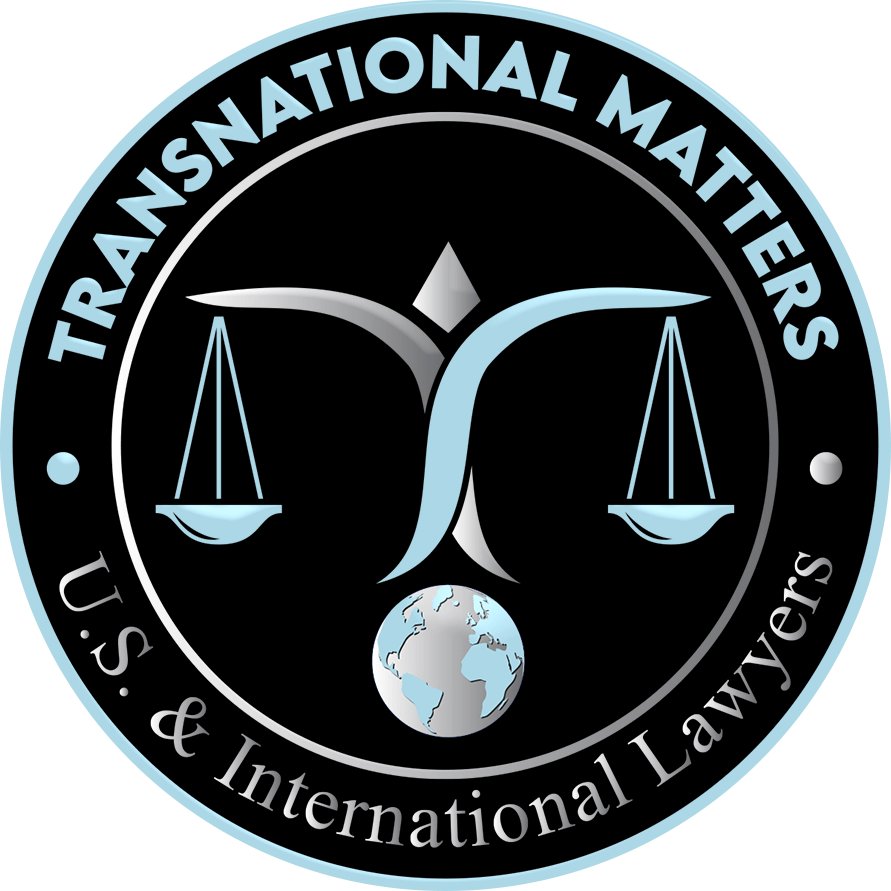
Understanding Reverse Piercing and the Implications of Horizontal vs. Vertical Corporate Veil Piercing
Does the risk of personal liability keep business owners up at night? This post explains Reverse Piercing and compares horizontal versus vertical corporate veil piercing. It outlines the mechanisms of corporate veil, legal outcomes, and strategic business considerations to help hedge against exposure. Readers gain clear insights and practical knowledge to better manage risk and safeguard assets.
Key Takeaways
- Corporate veil defines separation between personal and business liabilities
- Reverse piercing holds decision makers accountable for misused corporate structures
- Horizontal and vertical piercing address distinct inter-company asset issues
- Clear financial records and compliance reduce business exposure risks
- Judicial decisions depend on robust evidence and sound governance practices
Defining Corporate Veil and Piercing Mechanisms
Examining the corporate veil, this section reviews the purpose of piercing protections in cases involving health care or cash disputes. It outlines reverse piercing, the difference between horizontal and vertical approaches, and the impact on ownership liability. Respondeat superior principles and lawyer roles are discussed to show stakeholder effects.
Exploring the Concept of the Corporate Veil
The corporate veil concept offers a legal separation that protects personal assets from business risks while providing limited liability protection to shareholders. This framework is common in structures such as a limited partnership and serves as essential information for comparing liability exposure between a corporation and a sole proprietorship.
Legal frameworks evaluate if the corporate form is misused to escape financial responsibility. Practical cases indicate that breaching the separation between individual participation and company operations may lead to increased liability, highlighting the need for clearly defined roles within both limited partnerships and other corporate models.
Analyzing the Purposes of Veil Piercing
The analysis of veil piercing purposes reveals that this legal remedy holds individuals liable when the corporate structure is misused. The doctrine serves to counter practices that conceal fraud, impacting sectors like finance, credit card operations, and technology.
Legal experts observe that current practices allow for piercing the veil when personal and business responsibilities become entangled. Real-world instances in finance and credit card disputes underscore how such actions can expose hidden fraud and compromise corporate operations in technology-driven industries.
Introducing Reverse Piercing and Its Relevance
Reverse piercing offers a legal mechanism that addresses situations where a corporate entity is misused to hide the failure to settle business debts or to shield valuable business assets from creditors’ interest. This approach helps courts reach beyond standard liability protections by examining if personal interests override the protective separation that a corporate structure is meant to provide:
Reverse piercing remains relevant as it clarifies the responsibilities of those who establish business structures, particularly when delineating horizontal versus vertical piercing approaches. This legal concept assists practitioners in identifying cases of asset shielding where financial failure could otherwise leave creditors at a disadvantage.
Distinguishing Between Horizontal and Vertical Piercing
Corporate veil piercing mechanisms require legal experts to differentiate between horizontal and vertical approaches. Horizontal piercing often investigates cases where an llc’s interconnected operations result in commingling of assets, while vertical piercing concentrates on a layering of corporate entities and discrepancies in valuation that may leave a defendant exposed:
Legal professionals note that real estate transactions and llc structures present clear examples where segregation of funds is critical, and any failure in maintaining this separation may bring a defendant under closer judicial scrutiny. Courts use established evidence from commingling and valuation discrepancies to guide decisions on piercing protections in corporate operations.
Implications of Veil Piercing for Stakeholders
Stakeholders face significant challenges when corporate separation fails to hold, as courts may apply an equitable remedy that exposes personal and corporate assets. Legal disputes sometimes involve a judgment creditor who targets assets, including a bank account, especially in cases where the breach of boundaries intersects with criminal law issues.
Financial risks increase when judicial actions require a remand of assets to resolve claims of mismanagement. Practical experience shows that maintaining distinct corporate operations aids in reducing complications for all parties involved, ensuring that personal obligations remain separate from business liabilities.
Understanding Reverse Piercing
Reverse piercing defines a law mechanism that holds individuals liable for corporate mismanagement. It highlights situations involving debt, negligence, and property tax challenges using clear evidence from key cases. This section reviews its legal framework, practical instances, associated risks, and benefits while comparing it against traditional veil piercing methods.
Defining Reverse Piercing and Its Legal Framework
Reverse piercing refers to a legal process that holds decision makers accountable when a corporate structure is misused to shelter personal missteps, especially within a limited liability company operating in miami. Legal frameworks, supported by cases involving employment matters and examined by an appellate court, detail the responsibilities of a chief executive officer in ensuring clear separation of personal and corporate interests:
This legal measure proves effective when corporate misuse blurs the line between business operations and personal actions, with practical examples drawn from employment challenges and initiatives led by a chief executive officer within a limited liability company. Legal professionals rely on rulings by an appellate court to support interpretations that hold individuals liable, thus reinforcing accountability under the reverse piercing framework.
Situations Where Reverse Piercing Is Considered
Legal experts observe that reverse piercing is considered in situations where corporate entities obscure financial responsibilities, as seen during mergers and acquisitions. Court decisions and university case studies reveal a precedent that informs practitioners on addressing mismanaged business structures involving high-profile sectors such as advertising and jersey sponsorship disputes:
Reviews of corporate disputes indicate that reverse piercing serves as an effective legal mechanism when individuals attempt to shield their assets inappropriately. Stakeholders often gain valuable insights from cases in advertising and sports-related mergers and acquisitions, providing actionable clarity that benefits both creditors and business operations.
Key Cases Illustrating Reverse Piercing in Practice
Key cases in Illinois illustrate reverse piercing by applying carefully crafted appraisal rights and corporate policy. Courts have examined invoices and dividend records to determine if personal interests improperly shield corporate funds, resulting in legal measures that enforce accountability in complex business structures.
Legal proceedings in these cases reveal the practical use of reverse piercing to address disputes involving appraisal rights and dividend misallocations. These examples provide actionable insights that assist legal practitioners in navigating scenarios where corporate policy is challenged through detailed invoice reviews and regulatory scrutiny.
Risks and Benefits Associated With Reverse Piercing
Reverse piercing offers a legal tool that can reveal hidden liabilities while challenging established compliance protocols and increasing financial expense. Professionals note that this remedy may lead to enhanced discovery of mismanaged stock allocations and unforeseen probate issues:
- Cost challenges and increased expense
- Greater discovery of improper practices
- Stricter compliance measures in corporate settings
- Impact on stock levels and valuations
- Potential complications regarding probate
Legal experts report that despite these risks, reverse piercing also provides benefits by drawing clear lines between personal and corporate liabilities, which supports smoother dispute resolution. Industry observations indicate that when applied judiciously, this mechanism can streamline discovery processes and balance the overall management of corporate responsibilities.
Comparing Reverse Piercing to Traditional Veil Piercing
Reverse piercing imposes individual accountability where money concerns and misrepresentation issues arise, especially when a corporate veil llc structure is misused to hide poor accounting practices. Traditional veil piercing, on the other hand, targets the limits of liability protection in a holding company, ensuring that established accounting records remain clear and free from inappropriate actions.
This examination of legal remedies provides actionable insights for stakeholders facing corporate structure disputes and clarifies areas of concern with a focus on core financial practices and responsibility:
- Reviewing accounting records for transparency
- Identifying instances of misrepresentation in financial practices
- Ensuring proper money management within a corporate veil llc
- Monitoring the role of a holding company in protecting individual liability
Horizontal Versus Vertical Corporate Veil Piercing
This section compares horizontal and vertical corporate veil piercing methods. It outlines definitions, key distinctions, and scenarios favoring each approach, supported by case law examples. The content discusses impacts on the board of directors and implications arising from a judgment, loan transactions, statute interpretations, and regulation measures, providing a concise overview that bridges practical insights with legal benchmarks.
Defining Horizontal Corporate Veil Piercing
The concept of horizontal corporate veil piercing examines the blending of assets among interconnected llcs within a company. Courts in new jersey apply this method in commercial law to address potential tort claims and prevent misuse of the corporate structure.
This approach targets situations where company operations are interrelated, making it difficult to separate personal and business liabilities. For clarity, an HTML table below summarizes the primary aspects:
Defining Vertical Corporate Veil Piercing
Vertical corporate veil piercing targets the separation between corporate layers within a structured business model, ensuring that limited liability protections remain intact and are not misused. Legal professionals often review records in regions like Delaware, where private equity arrangements sometimes obscure transparent asset management, turning limited liability into a misleading fiction.
This method carefully assesses the roles of parent and subsidiary entities to uphold clear ownership and financial responsibility, a practice that serves as a valuable tool in addressing disputes regarding asset allocation and governance:
- Evaluating the structure of corporate layers
- Maintaining clarity in asset management
- Guarding against misuse of limited liability
- Reviewing private equity practices within Delaware
Key Differences Between Horizontal and Vertical Approaches
Horizontal approaches focus on interactions between contiguous business entities, where misallocated funds may trigger undercapitalization concerns and potential class action suits. This method emphasizes safeguarding trust in asset management, ensuring that shared financial responsibilities adhere to accepted standards in corporate law.
Vertical methods scrutinize the separation between different layers within a business, upholding a structure that supports robust tax planning and minimizes disputes. By clearly defining boundaries, this approach reinforces trust and accountability in corporate law, protecting against risks that could lead to class action litigation.
Situations Favoring Horizontal Versus Vertical Piercing
In certain scenarios, horizontal piercing is favored when interconnected businesses exhibit overlapping financial obligations and risk factors, such as divorce settlements where asset separation is critical. Courts pinpoint issues such as vicarious liability and demand that registered agents maintain clear records, prompting law firm reviews to ensure accountability and transparency:
- Review of overlapping operations
- Assessment of asset distribution in divorce cases
- Evaluation of vicarious liability concerns
- Role of registered agents in recording transactions
- Consultation with law firms for clear compliance
Vertical piercing is preferred in cases involving complex, multi-layered corporate structures where each level must demonstrate adherence to established financial practices; insurance claims and legal responsibility are scrutinized to verify proper separation. Experts note that distinct layers benefit from strict regulatory oversight, with law firm analysis and registered agent oversight ensuring a robust defense against liabilities.
Case Law Examples of Horizontal and Vertical Piercing
Case law in the United Kingdom offers valuable insights into the differences between horizontal and vertical approaches in corporate disputes. Judicial outcomes under common law have clarified how management practices and competition law standards influence efforts to pierce corporate veil llc protections.
Legal examples demonstrate the tangible impact of these methods on business structures and provide actionable direction for stakeholders:
- Evaluations based on common law principles in the United Kingdom
- Influences of competition law on management practices
- Strategies to pierce corporate veil llc in varied corporate settings
These instances guide legal professionals in applying refined practices to ensure proper asset separation and clear financial responsibility.
Legal Consequences of Piercing the Veil
Examining piercing judgments, the analysis covers outcomes affecting company liability and creditor rights while discussing defenses against claims of a fraudulent conveyance. Courts such as the court of chancery apply equity principles to address fiduciary issues, with insights into regulatory effects, economics, and future trends in litigation, as well as alternative dispute resolution measures.
Overview of Legal Outcomes From Piercing Judgments
The legal outcomes from piercing judgments often result in significant shifts in liability, with courts carefully reviewing motions that challenge the corporate piercing veil. In cases involving a limited liability partnership in north carolina, judgments may expose decision makers to personal risks, especially if a business faces insolvency or other financial pressures.
Judicial decisions in these matters have practical impacts that guide stakeholders on how to manage risks and maintain clear separation between personal and business assets. Legal practitioners advise that a well-documented motion can help clarify responsibilities and prevent the misuse of the corporate piercing veil, thus reducing insolvency risks within a limited liability partnership environment in north carolina.
Impact on Company Liability and Creditor Rights
The removal of the corporate veil through a lawsuit can change company liability by exposing previously shielded investment funds, which places a stronger emphasis on meeting the burden of proof during legal proceedings. Courts require clear evidence that corporate contracts were used improperly, and this scrutiny can affect both financial commitments and overall risk exposure.
Creditor rights receive a significant boost when legal actions unveil the true financial state of a company, prompting more thorough reviews of marketing strategies and contract documentation. Firms that maintain rigorous internal controls can better manage the burden of proof in disputes, thereby protecting their investment positions and reducing the risks associated with potential litigation.
Alternatives and Defenses Against Veil Piercing Claims
Legal advisors recommend that companies strengthen their corporate governance by maintaining thorough records and using precise phrase definitions in internal policies to establish a robust defense against veil piercing claims. This approach improves security and demonstrates that corporate liability remains distinct, providing a solid argument to protect the debtor’s interests.
Practitioners focus on clear communication and stringent corporate governance to offer alternatives when facing piercing claims. By emphasizing established security measures and carefully managing corporate liability, defences prove effective in outlining that the corporate structure remains intact, thereby shielding the debtor from inappropriate claims.
Regulatory Implications of Veil Piercing Decisions
The judiciary’s decisions on veil piercing affect regulatory frameworks across various jurisdictions, including Wisconsin, as courts aim to uphold justice while addressing potential injury claims. Legal experts note that cases involving c corporation structures often prompt reforms that protect against personal injury and financial harm, ensuring that corporate governance remains uncompromised.
Regulatory changes derived from these judgments provide clarity on liability boundaries and signal to industry stakeholders how courts will address mismanaged corporate assets. This proactive oversight assists companies in mitigating risks where decisions related to a personal injury might otherwise be obscured by the corporate veil, thereby reinforcing accountability in complex business arrangements.
Future Trends in Veil Piercing Litigation
Emerging trends in veil piercing litigation signal that courts may increasingly scrutinize corporate separation to address uncovered business debts and mismanaged assets. Legal persons and entities, especially in states like Nevada, are expected to face closer examination as estate planning strategies and financial obligations become more intertwined.
Recent case patterns show that litigation will likely focus on clarifying the roles of decision makers within an entity and ensuring that clear boundaries are maintained. This approach offers definitive guidance to businesses and legal persons on managing estate planning and business debts, while protecting interests in complex corporate structures.
Strategic Considerations for Businesses
Addressing best practices to prevent improper corporate veil piercing, the section stresses proper documentation, compliance, and the role of corporate governance. It covers risk evaluation, insurance options, and state law implications from mexico to the court of appeal. The discussion offers practical insights, ensuring businesses handle a license review thoroughly before any court action might pierce the veil.
Best Practices to Protect Against Corporate Veil Piercing
Companies can protect against improper corporate veil piercing by maintaining strict regulatory compliance and following internal revenue service guidelines. They should document the separation of corporate finances clearly to avoid being labeled a judgment debtor and to manage risks effectively:
Organizations should implement internal controls and regular audits to establish transparent financial boundaries. By maintaining strict records and clear separation between partnership and subsidiary activities, companies support effective governance and reduce the risk of legal exposure as a judgment debtor.
Importance of Proper Documentation and Compliance
Proper documentation and compliance serve as a safeguard against potential misconduct and legal liability in cases involving piercing the corporate veil. Legal experts note that maintaining accurate records not only protects intellectual property but also supports a favorable credit profile during dispute resolutions.
Organizations can reduce risk and improve operational stability by implementing thorough compliance measures and clear financial documentation. This practice offers actionable insights to mitigate legal liability issues and ensures that any challenges involving corporate structure disputes are addressed in a professional and proactive manner.
The Role of Corporate Governance in Veil Protection
Strong corporate governance is integral to maintaining the separation provided by the corporate veil. Expert boards rely on best practices and oversight, with guidance from decisions by the Delaware court of chancery, to ensure that internal policies remain clear and that employee benefits are managed in accordance with regulatory expectations.
Organizations that implement rigorous governance measures reduce risks associated with mismanagement and potential legal violations that may lead to a criminal inquiry or an appeal. Industry professionals note that a solid governance framework fosters a positive opinion among stakeholders while reinforcing transparency and accountability in corporate operations.
Evaluating Risk Exposure and Insurance Options
Businesses assess risk exposure by conducting regular audits that verify beneficial ownership and ensure corporate operations remain transparent. This proactive approach helps the corporation manage potential challenges before a trial, reducing the likelihood of personal liability issues.
Insurance options serve as a practical tool to mitigate risks emerging from inadequate oversight of corporate structures. By integrating audit findings with tailored coverage plans, companies can safeguard against personal liability and maintain the integrity of beneficial ownership records within the corporation.
Understanding the Implications of State Laws on Veil Piercing
State laws on veil piercing influence decisions in a trial court by setting clear guidelines for asset protection and the application of lien principles. The sourcehov framework aids legal professionals in understanding the concept behind corporate separation and ensuring that judicial evaluations support fair outcomes.
Legal practitioners note that state regulations provide a structured approach to resolving disputes involving veil piercing, emphasizing the significance of asset protection and the proper management of liens. Courts use the sourcehov criteria to reinforce the concept’s integrity, thereby offering actionable insights for companies aiming to mitigate financial exposure.
The Role of Courts in Piercing Decisions
Courts assess corporate veil disputes by reviewing jurisdictional variations, criteria on property management, payroll separation, and behavior in cooperative and s corporation settings. Influential cases serve as benchmarks for predicting outcomes and underscore the role of judicial discretion. This section outlines ruling differences, case impacts, and decision forecasts rooted in past judicial practices.
Overview of Jurisdictional Differences in Rulings
Court decisions on piercing mechanisms vary across jurisdictions as regional legal standards and documented evidence shape outcomes. Factors such as local entrepreneurship regulations, tax implications, and readily available data in pdf formats help alter how courts assess liability in corporate disputes:
Courts consistently investigate statutory differences that affect litigation strategies, with clear indicators from both tax guidelines and entrepreneurship standards informing their rulings. Legal analysts emphasize that reliable data and official pdf records help stakeholders address risk factors and refine operational practices in corporate disputes.
Criteria Courts Utilize for Piercing Decisions
Courts review detailed documentation and established case evidence, placing significant emphasis on jurisdiction when assessing corporate structures. They examine factors such as accurate payment records and reliable financial data, as shortcomings may expose a risk that undermines the shield intended to separate personal and corporate liabilities.
Legal experts note that strong judicial scrutiny minimizes any potential injustice by applying clear-cut criteria. By carefully evaluating cases through practical examples and stringent evidence, courts ensure that any misuse of the corporate structure does not compromise stakeholder interests or create undue risk in the payment process.
Influential Court Cases Shaping Veil Piercing Law
Influential court cases reflect a clear trend in holding corporate decision-makers responsible for improper use of the corporate veil. Prominent rulings have set benchmarks by clarifying the distinct treatment required for reverse piercing and for horizontal and vertical approaches:
- Major Delaware cases define strict separation protocols.
- New Jersey decisions stress correcting commingled operations.
- Illinois rulings highlight accountability in reverse piercing scenarios.
Recent judicial decisions show that courts rely on detailed evidence and robust governance practices when evaluating complex corporate structures. These cases offer valuable guidance to legal professionals by outlining practical expectations for maintaining clear financial separations.
Predicting Court Outcomes Based on Past Cases
Court decisions in past cases offer a clear pattern that guides predictions regarding corporate veil disputes. Legal professionals use specific evidence and well-documented case outcomes to assess the likelihood of a successful piercing claim, ensuring that each decision builds on established judicial patterns.
Legal analysts rely on a detailed review of previous judgments to inform their assessments of current cases. Their expertise helps practitioners understand risk exposure and prepare strategic approaches that comply with recognized standards in corporate litigation.
The Significance of Judicial Discretion in Veil Piercing
Judicial discretion plays a central role in products related to veil piercing decisions. Judges rely on detailed evidence and clear financial records when evaluating cases, which helps balance fairness and accountability in corporate structures.
This flexibility allows courts to adjust established legal standards to real-world business challenges. Clear documentation and well-defined roles support decision makers in determining liability, which ultimately benefits stakeholders and strengthens corporate governance.
Frequently Asked Questions
What is corporate veil piercing?
Corporate veil piercing is a legal measure by which courts bypass a company’s separate identity and hold its owners responsible for debts or wrongdoings when the business structure is misused.
How does reverse piercing differ from standard piercing?
Reverse piercing applies the jewelry from the back, creating a distinctive appearance compared to typical front placement. This method offers a fresh look while requiring careful technique for proper alignment and healing.
What distinguishes vertical from horizontal veil piercing?
Vertical veil piercing holds a parent company liable for its subsidiary’s actions, whereas horizontal veil piercing assigns responsibility among companies that operate at the same level, reflecting differences in organizational structure and legal responsibilities.
What legal penalties result from veil piercing?
Veil piercing typically holds owners directly liable for business obligations, including unpaid debts, fines, and other legal judgments. This legal remedy aims to ensure responsible business practices while protecting stakeholder interests.
What strategic steps reduce veil piercing risks?
Maintaining separate finances, upholding corporate formalities, and ensuring sufficient capitalization help reduce veil piercing risks while clear documentation and legal compliance reinforce structural integrity.
Key Takeaways on Corporate Veil Piercing and Legal Implications
Understanding reverse piercing holds corporate decision-makers responsible when personal interests compromise business integrity. The examination of horizontal and vertical piercing outlines clear pathways for courts to address asset commingling and layered corporate structures. Stakeholders benefit from clear guidelines that strengthen asset management and minimize personal liability risks. This analysis highlights the relevance of legal strategies in maintaining robust financial boundaries and enhancing overall corporate accountability.


